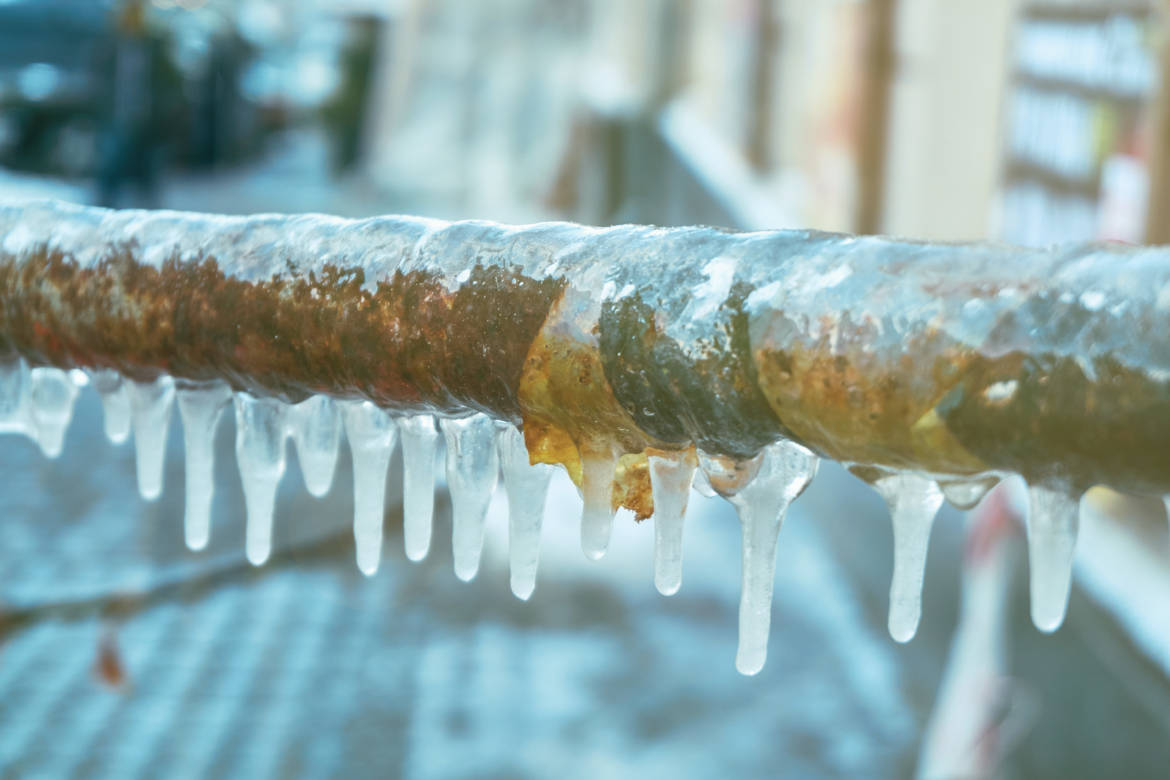We have found this article on 6 Ways to Prevent Frozen Pipes directly below on the web and accepted it made perfect sense to discuss it with you over here.

Winter can damage your plumbing, specifically by freezing pipes. Right here's just how to avoid it from occurring and what to do if it does.
Intro
As temperatures decrease, the threat of icy pipes boosts, possibly resulting in pricey repair services and water damage. Recognizing exactly how to stop frozen pipes is crucial for home owners in chilly climates.
Comprehending Frozen Pipes
What triggers pipes to ice up?
Pipelines freeze when subjected to temperatures below 32 ° F (0 ° C) for extended periods. As water inside the pipelines freezes, it expands, taxing the pipe wall surfaces and potentially triggering them to break.
Threats and problems
Icy pipes can cause water system disturbances, building damage, and costly repair work. Ruptured pipelines can flooding homes and trigger considerable architectural damages.
Indications of Frozen Water Lines
Recognizing frozen pipes early can stop them from breaking.
Just how to recognize frozen pipes
Try to find decreased water circulation from taps, unusual odors or sounds from pipelines, and noticeable frost on revealed pipes.
Avoidance Tips
Insulating vulnerable pipelines
Cover pipes in insulation sleeves or make use of warmth tape to safeguard them from freezing temperatures. Concentrate on pipelines in unheated or outside areas of the home.
Home heating strategies
Maintain interior spaces effectively heated, specifically areas with pipes. Open up cupboard doors to allow cozy air to distribute around pipes under sinks.
Securing Exterior Plumbing
Yard hoses and outside taps
Detach and drain yard tubes before wintertime. Mount frost-proof faucets or cover outdoor faucets with protected caps.
What to Do If Your Pipelines Freeze
Immediate actions to take
If you suspect icy pipes, maintain faucets open up to soothe stress as the ice melts. Use a hairdryer or towels taken in warm water to thaw pipes slowly.
Long-Term Solutions
Architectural adjustments
Consider rerouting pipes away from outside walls or unheated locations. Include added insulation to attic rooms, basements, and crawl spaces.
Upgrading insulation
Purchase high-grade insulation for pipes, attic rooms, and wall surfaces. Appropriate insulation helps keep regular temperature levels and lowers the threat of icy pipelines.
Conclusion
Stopping icy pipelines requires positive actions and fast actions. By understanding the causes, signs, and safety nets, house owners can shield their plumbing during cold weather.
5 Ways to Prevent Frozen Pipes
Drain Outdoor Faucets and Disconnect Hoses
First, close the shut-off valve that controls the flow of water in the pipe to your outdoor faucet. Then, head outside to disconnect and drain your hose and open the outdoor faucet to allow the water to completely drain out of the line. Turn off the faucet when done. Finally, head back to the shut-off valve and drain the remaining water inside the pipe into a bucket or container. Additionally, if you have a home irrigation system, you should consider hiring an expert to clear the system of water each year.
Insulate Pipes
One of the best and most cost-effective methods for preventing frozen water pipes is to wrap your pipes with insulation. This is especially important for areas in your home that aren’t exposed to heat, such as an attic. We suggest using foam sleeves, which can typically be found at your local hardware store.
Keep Heat Running at 65
Your pipes are located inside your walls, and the temperature there is much colder than the rest of the house. To prevent your pipes from freezing, The Insurance Information Institute suggests that you keep your home heated to at least 65 degrees, even when traveling. You may want to invest in smart devices that can keep an eye on the temperature in your home while you’re away.
Leave Water Dripping
Moving water — even a small trickle — can prevent ice from forming inside your pipes. When freezing temps are imminent, start a drip of water from all faucets that serve exposed pipes. Leaving a few faucets running will also help relieve pressure inside the pipes and help prevent a rupture if the water inside freezes.
Open Cupboard Doors
Warm your kitchen and bathroom pipes by opening cupboards and vanities. You should also leave your interior doors ajar to help warm air circulate evenly throughout your home.

I have been very interested in 6 Ways to Prevent Frozen Pipes and I'm hoping you enjoyed my post. Are you aware of another individual who is involved in the topic? Do not hesitate to promote it. We enjoy reading our article about 6 Ways to Prevent Frozen Pipes.
Book Appointment Now
Comments on “Ways to Avoid Frozen Plumbing in Winter: Professional Guidance”